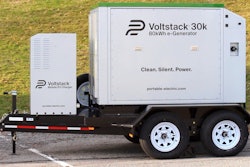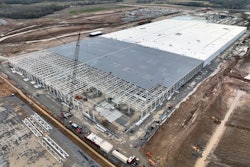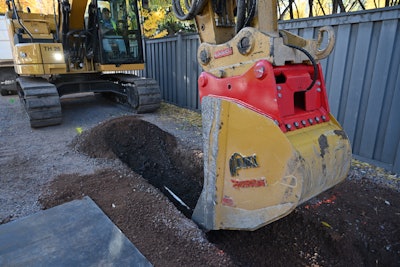
Rodradar has developed the world’s first excavator bucket with ground penetrating radar for detecting buried utilities in real time.
In a partnership with AMI Attachments, the Israel-based company has been testing its patented bucket with contractors, including with Stutsman Gerbaz of Aspen, Colorado, which has been testing the device for about six months.
“It scans the ground in real time,” says company owner Shay Stutsman. “And you can see utilities that are actually in the ground. It's the Holy Grail for earthmoving.”
Rodradar demonstrated the device, which it calls Live Dig Radar (LDR) Excavate, at ConExpo in March. It can detect utilities of all types – gas, electric, water, sewer, fiber, including those with PVC pipe – and displays their depth and distance on a touchscreen tablet mounted in the excavator’s cab. (Watch the video at the end of this story to see the bucket in action.)
“The operator finally has eyes to look into the ground whenever he is coming to any site and detect and avoid these utilities,” says Yuval Barnea, Rodradar vice president sales and marketing.
Barnea says the bucket is not meant to replace 811 and location services; it is a “last line of defense.”
“Imagine now the operator comes to a site, whether he has any prior information, whether it’s reliable or not, he has a tool now to detect and avoid hitting utilities while excavating,” he says.
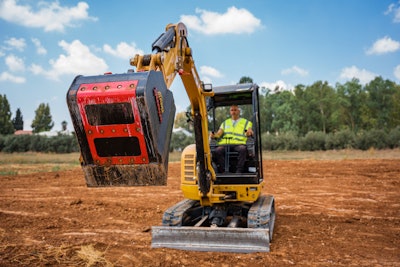 The radar technology is integrated into the bottom of the LDR bucket, which Rodradar says will last as long as long as any typical excavator bucket.Rodradar
The radar technology is integrated into the bottom of the LDR bucket, which Rodradar says will last as long as long as any typical excavator bucket.Rodradar
The LDR scans the ground at the push of a button on the touchscreen. The bucket is positioned in front and moves toward the excavator over the area to be scanned. The tablet then displays the utilities’ depth and distance. Alerts are sounded when utilities are detected, and a message on red background comes across the screen announcing, “Utility Detected.” The system uses advanced algorithms to classify radar echoes, the company says.
Stutsman Gerbaz has been using the LDR bucket on a project to replace underground power lines for the city of Aspen, Colorado, for about six months.
“We're finding things that we shouldn't find, like plastic irrigation lines that no utility locator ever locates,” Stutsman says.
He says the company uses 811 and a private utility locator, but there is still a chance utilities can get missed.
“Where this has really increased our efficiency is knowing that there's nothing in the ground, so we can actually take full scoops and trench really comfortably,” he says. “It helps us find the utilities that we know are there. And it also really makes us go a lot faster when we know for sure there's nothing in the ground.”
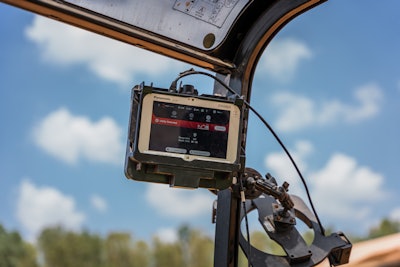 The tablet mounted in the cab alerts the operator with a red message across the screen and an alert sound when an underground utility is detected.Rodradar
The tablet mounted in the cab alerts the operator with a red message across the screen and an alert sound when an underground utility is detected.Rodradar
- Type I is for excavators weighing 3,000 to 10,000 pounds and comes in widths of 18 or 24 inches.
- Type II is for excavators weighing 10,000 to 24,000 pounds and comes in widths of 18 or 24 inches.
- Type III is for excavators weighing 24,000 to 45,000 pounds and comes in a 24-inch width.
The bucket remains under testing. It recently caught the attention of Sitech Tejas, a Trimble distributor and part of the Holt Cat company in Texas, which has signed a $1.4 million agreement with Rodradar to become the first U.S. dealer for LDR Excavate. The order will be delivered by AMI Attachments, according to Rodradar.
"We are pleased to offer this innovative solution to our customers, giving them an edge in bidding for construction projects with a high risk of utility strikes, which is a problem in Texas, as well as save them money," says Glenn Swisher, general manager of Sitech Tejas.


